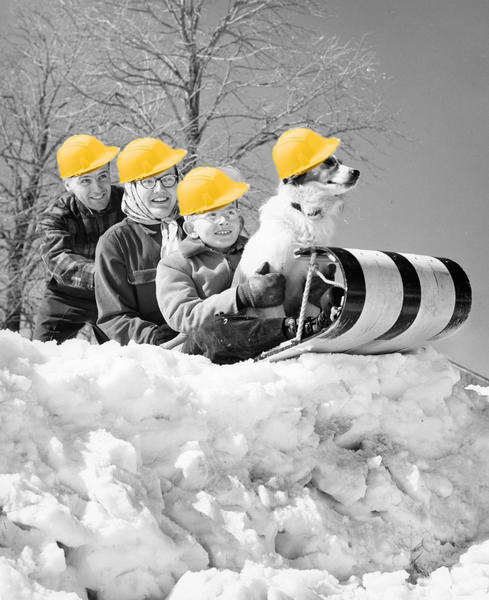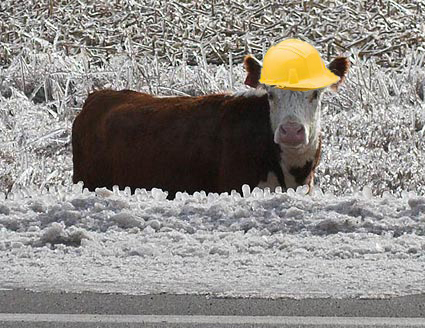4/29/08 Stop me if you've heard this one: What Did the Technical Expert say to the Wind Turbine Salesman?
 What is five feet long, three feet wide, five to 6 inches thick, weighs several hundred pounds and can’t be broken by three adults jumping up and down on it?
What is five feet long, three feet wide, five to 6 inches thick, weighs several hundred pounds and can’t be broken by three adults jumping up and down on it?
What roars loudly and sounds scary and makes you instinctually want to stay away?
What did the technical expert say to the turbine salesman?
Wait---is this supposed to be a joke?
Find out by reading this email!
It was sent from John Zimmerman, the president of VERA to some members of the American Wind Energy Association. The AWEA’s stated goal is to promote wind power growth through advocacy, communication, and education.
VERA provides and manages tasks and technical issues considered in commercial scale wind project development. Mr. Zimmerman’s experience is in performing technical due diligence and risk assessment across a variety of technologies.
The following email was written in January of 2000
Subject: Ice Shedding from Turbines and Public Safety
Dear [member names]
I’ve watched over the wind turbines GMP has had installed in Vermont over the last 10 years and I have several thoughts that [may] be useful to this discussion
Here in Vermont, and elsewhere in the northeastern US, the winds blow strongest at the mountain tops, where it is also the most icy. A common first question to wind developers in this region is ‘why don’t you put the wind turbines at the ski areas (where there is human development)’? The answer is because of the danger to public safety due to ice throws. Ski areas are not a good place for wind turbines.
Back in the mid 1980s one of the windy areas that was being considered for wind development was near to ski trails. Boeing and/or Hamilton Standard did some work to determine how far we must stay away from the ski trails to be safe from ice being thrown from their turbines (the MOD 5b was the [B]oeing machine at the time). Without going back to dig up those papers, and if I remember correctly, the distance was between .25 and .5 miles away, down wind. It’s a function of blade tip speed, so applicable to present day turbines too.
While the Boeing study was academic, the danger from ice being release[d] from rotor blades overhead is real—and a hard hat is not going to provide you with much comfort. I have stood near the turbines GMP had on Mt. Equinox in the early 1990’s and more recently the Zond 500 KW turbines in Searsberg VT during and after icing events. When there is heavy rime ice build up on the blades and the machines are running you instinctually want to stay away. They roar loudly and sound scarey. (sic) Probably you would feel safe within the .5 danger zone however.
One time we found a piece of ice near the base of the turbine that was pretty impressive. Three adults jumping on it couldn’t break [it] It looked to be 5 or 6 inches thick, 3 feet wide and about 5 feet long. Probably weighed several hundred pounds. We couldn’t lift it. There were a couple of other pieces nearby but we wondered where the rest of the pieces went.
In the winter, icing is a real danger and GMP therefore restricts public access to the site(s). Maintenance workers have developed protocol for working on turbines during icing conditions, though I am not familiar with the details. I’ll ‘dig into it’ if you want.
Regards,
John Zimmerman,
VERA

Note From the BPRC Research Nerd: For extra credit, read the following comment on the above. It’s from an email written by Randy Swisher, executive director of the AWEA since 1989.
This was written in February of 2004
Dear [name]
Here is a comment from John Zimmerman. He states that wind turbines don’t belong in ski areas, but I think it is really just a question of what is the appropriate setback. John describes some of the ice they have seen at the Searsburg site and it sounds pretty intimidating but manageable with proper setbacks.
I think that is the last of the information I have on the topic. It isn’t a lot but I hope you’ll find it helpful. Please let me know if you need anything else, and feel free to consult our website at www.awea.org as well.
Thanks for your interest. I hope next time I’m riding my bike in the Northeast Kingdom I will actually have a chance to see a few wind turbines!
Randy Swisher
Click here to visit the VERA website
Click here to visit the AWEA website
Click here to visit windaction.org where we found this document
FOR EXTRA EXTRA CREDIT READ ABOUT RIME ICE:
What is it?
Hard rime is a white ice that forms when the water droplets in fog freeze to the outer surfaces of objects. It is often seen on trees atop mountains and ridges in winter, when low-hanging clouds cause freezing fog. This fog freezes to the windward (wind-facing) side of tree branches, buildings, or any other solid objects, usually with high wind velocities and air temperatures between 28 °F and 18 °F.
GOT TURBINE TROUBLES or CONCERNS?
Call 1-888-732-7234! The Coalition for Wisconsin Environmental Stewardship (CWESt) is a grass roots organization of made up of people concerned about the responsible placement of wind turbines. CWESt's primary goal is to provide a central source for both gathering and giving out reliable information about industrial wind plant siting, issues relating to the industrial wind turbines and the effects on residents. CWESt will take your concerns and information to our legislators in Madison. The number is good 24/7! The BPRC applauds CWESt for providing us with this very helpful resource.